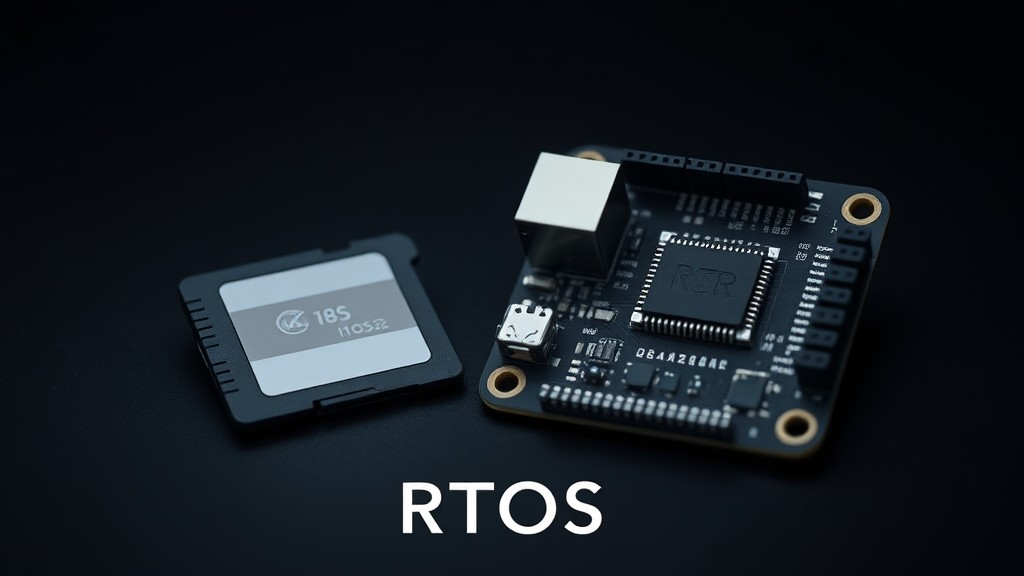Are you still troubled by the complexity of embedded systems? Do you want to make your smart hardware more powerful, stable, and responsive? Then you definitely need to understand Real-Time Operating Systems (RTOS)! It is like magic in the embedded world, granting your devices extraordinary capabilities. Next, we will introduce RTOS, from basic concepts to code implementation.

1. RTOS: The Soul of Embedded Systems
In embedded systems, real-time performance is crucial. This means the system must respond to events within strict time constraints and precisely control the execution order of tasks. RTOS was born for this purpose! It can efficiently manage and schedule multiple tasks, ensuring that each task is completed within the specified time, thereby enhancing system stability and reliability. Imagine an autonomous vehicle that needs to process sensor data, control steering, braking, etc., simultaneously; any delay could have serious consequences. RTOS is the key to ensuring everything proceeds safely and orderly.
2. Core Components of RTOS: The Foundation for Building Real-Time Systems
A fully functional RTOS is like a precisely operating team, with each member performing their duties to achieve a common goal. The following core components form the foundation of RTOS:
- • Scheduler: The “commander” of RTOS, responsible for deciding which task should run and when. It schedules based on predefined strategies (such as priority, time-slicing), ensuring high-priority tasks receive timely responses. It is like the conductor of an orchestra, controlling the rhythm of each instrument’s performance.
- • Task Control Block (TCB): The “identity profile” of each task, storing key information such as task state, priority, stack pointer, etc. TCB is like each note on a score, recording various attributes of the task for RTOS management.
- • Portable Layer: The “adapter” of RTOS, containing low-level functions related to hardware, such as interrupt handling and context switching (saving and restoring CPU register states). This part of the code needs to be adjusted according to different hardware platforms but ensures that RTOS can be easily ported to various hardware platforms. It is like the interface of instruments, allowing different instruments to connect together.
- • Synchronization: The “traffic rules” between tasks, used to coordinate access to shared resources among multiple tasks, avoiding data conflicts and deadlocks. Common synchronization mechanisms include semaphores, mutexes, message queues, etc. This part is like various markings on a score, allowing instruments to play according to established rules.
3. Design of Task Control Block (TCB): The Essence of Task Management
TCB is the key data structure for RTOS task management. It is like an “ID card” for a task, recording all necessary information for RTOS management and scheduling. A simple TCB structure can be defined as follows:
typedef struct tcb_s {
unsigned int sem; // Semaphore flag
unsigned int* stack_top; // Stack top pointer
unsigned int* stack_ptr; // Current stack pointer
void* (*task_ptr)(void*); // Task function pointer
unsigned int priority; // Task priority
unsigned int state; // Task state (e.g., READY, RUNNING, BLOCKED)
} tcb_t;4. Implementation of the Scheduler: Efficient Task Switching
The scheduler is the heart of RTOS, responsible for switching between tasks and ensuring high-priority tasks receive timely responses. A simple priority-based preemptive scheduler can be implemented as follows:
#include <stdio.h>
#define MAX_TASKS 4
typedef struct tcb_s {
// ... (TCB structure definition, as shown above) ...
} tcb_t;
tcb_t task_list[MAX_TASKS];
int current_task = 0;
void scheduler() {
int highest_priority = -1;
int highest_priority_task = -1;
for (int i = 0; i < MAX_TASKS; i++) {
if (task_list[i].state == READY && task_list[i].priority > highest_priority) {
highest_priority = task_list[i].priority;
highest_priority_task = i;
}
}
if (highest_priority_task != -1 && highest_priority_task != current_task) {
// Switch task context (simplified implementation, actual needs to save/restore registers, etc.)
printf("Switching to task %d\n", highest_priority_task);
current_task = highest_priority_task;
// Execute task: task_list[current_task].task_ptr(); (simplified implementation)
}
}This code is a simplified scheduler; actual scheduler implementations would be more complex, needing to consider context switching, interrupt handling, and other factors.
5. Synchronization Mechanisms: Tools to Prevent Task Conflicts
In a multitasking environment, multiple tasks may need to access the same resources, such as shared memory, peripherals, etc. Without synchronization mechanisms, data conflicts, deadlocks, and other issues may arise. RTOS provides various synchronization mechanisms, such as semaphores, mutexes, message queues, etc.
6. Application Areas of RTOS: Ubiquitous Real-Time Control
RTOS has a very wide range of applications; almost all embedded systems with high real-time requirements rely on it:
- • Industrial Automation: Production line control, robot control.
- • Automotive Electronics: Engine control, body electronic systems.
- • Aerospace: Flight control systems, navigation systems.
- • Medical Devices: Monitors, medical imaging devices.
- • Consumer Electronics: Smartphones, smart home devices.
7. Conclusion:
RTOS is a powerful tool for embedded system development, capable of efficiently managing and scheduling real-time tasks, ensuring system stability and reliability. Mastering RTOS allows you to develop more powerful and intelligent embedded devices!